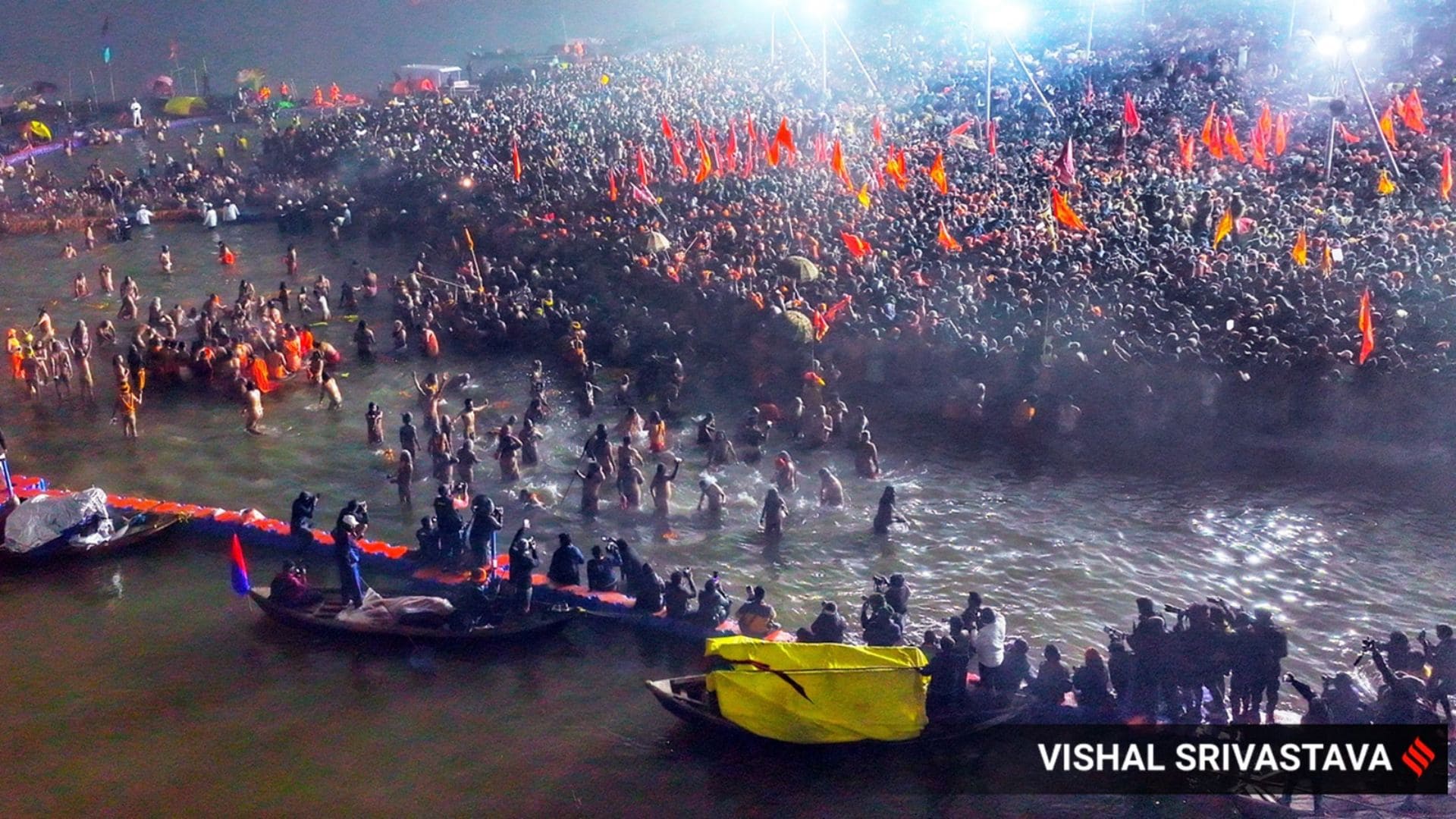
The Mythological Origins of Kumbh Mela: The Story of Samudra Manthan
The origins of the Kumbh Mela are linked to the Samudra Manthan, or the churning of the ocean, where gods (Devas) and demons (Asuras) collaborated to obtain Amrit, the nectar of immortality.
According to legend, during this process, a pot (Kumbh) containing Amrit emerged. To prevent the demons from claiming it, Lord Vishnu, disguised as Mohini, took the pot and fled. In the process, drops of Amrit fell at four locations: Prayagraj, Haridwar, Ujjain, and Nashik.
These sites have since become sacred pilgrimage destinations for Hindus, believed to bestow spiritual benefits upon those who bathe in their waters during the festival.
Similar Stories
Discover the profound spiritual significance of Lord Krishna’s miraculous intervention during Draupadi’s disrobing in the Mahabharata. Explore the themes of faith, divine vision (Divya Drishti), and Krishna’s role in upholding dharma. Learn how Krishna’s unseen presence protected Draupadi’s dignity and exposed the wickedness of the Kauravas, offering timeless lessons on surrender, righteousness, and divine grace.
Explore the legendary warriors and sages who could challenge or defeat Arjuna in battle without the intervention of Lord Krishna. From Parshurama's celestial prowess to Hanuman's divine strength, and the unparalleled knowledge of Sage Vishwamitra and Vashishta, we dive into their mythical feats and powers compared to Arjuna's archery skills.
Explore the captivating origins of Kumbh Mela, rooted in the story of Samudra Manthan from Hindu mythology. Discover the spiritual significance of the four sacred pilgrimage sites — Prayagraj, Haridwar, Ujjain, and Nashik — and learn about the celestial alignments that make this festival a profound celebration of faith, unity, and spiritual cleansing.
Astrology, Mantras, Events, Stories & More.
